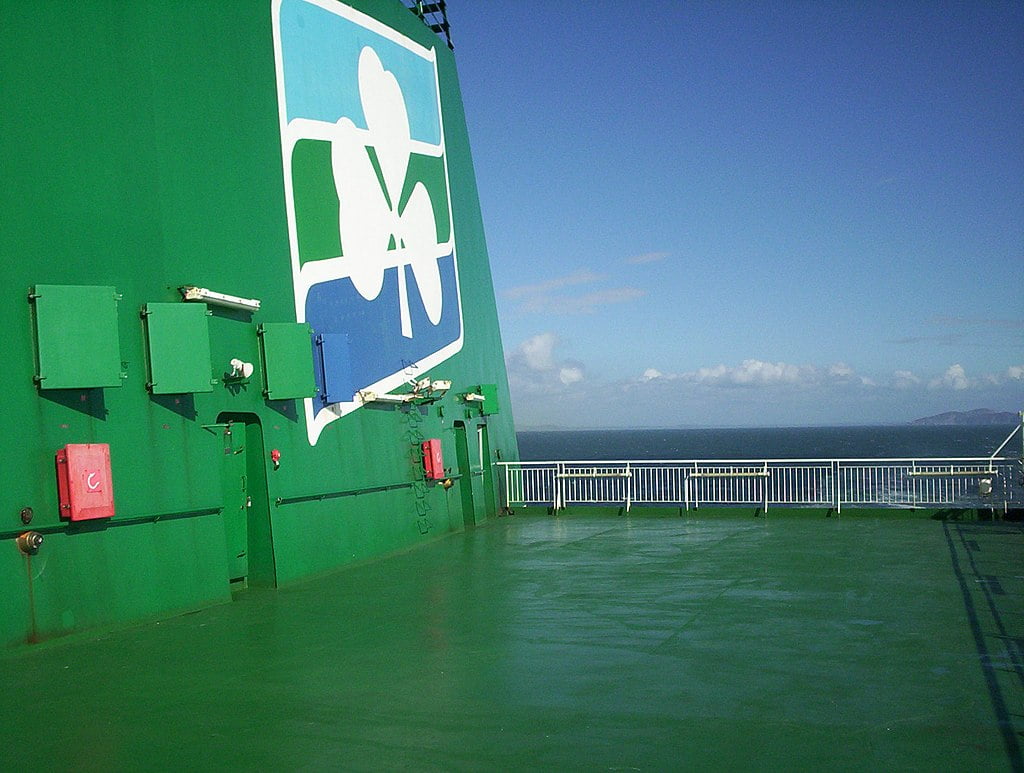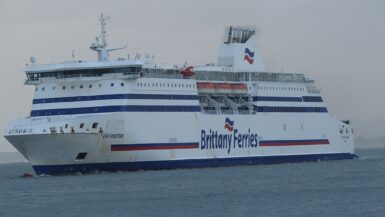Ireland and Northern Ireland are connected to five European nations via no less than 12 different ferry routes, so if your head’s spinning already, I feel you, cos researching, writing and updating this ultimate guide on all ferry routes to Ireland took me ages!
I’ve gathered all the essential information – route rundowns, insider tips for snagging the best fares, port-to-port maps, and everything else you need to kick off an unforgettable ferry holiday.
Consider this your lucky charm, as whether you’re plotting a ferry crossing from England, Wales, Scotland, France or Spain, you’ll find every international ferry route to and from Ireland right here. So pour yourself a pint of Guinness and let’s craic on…
FERRIES ROUTES TO IRELAND - THE BASICS
THE IRISH FERRY PORTS
From Ireland you can reach France, Wales, Scotland, England, and Spain by ferry. This international ferry network is served by five ports. Here’s an overview of these ferry ports from north to south:
Northern Irish Ports
- Larne: Located on the northeast coast, Larne is a gateway to Scotland, with short crossings to Cairnryan.
- Belfast: Belfast offers ferry routes to Scotland (Cairnryan) and England (Liverpool).
Republic of Ireland Ports
- Dublin: The busiest ferry port in Ireland, Dublin offers multiple daily crossings to north Wales (Holyhead) and a longer route to France.
- Rosslare: On Ireland’s southeastern most tip, Rosslare has the highest number of international ferry crossings, with five in total (two each to Wales and France and one to Spain).
- Cork: Cork offers just one route which connects Ireland to Brittany, France.
FERRY ROUTES TO IRELAND MAP
I’ve created an up-to-date map of all the ferry routes to and from Ireland below. I reckon seeing all the potential routes in one place like this can also give you ideas for trips that you may not have previously considered. And besides, who doesn’t love a good map?

WHICH FERRY COMPANY OPERATES EACH ROUTE?
-
Ireland to France ferry
-
Wales to Ireland ferries
-
Scotland Ireland ferries
-
Ferry to Spain from Ireland
-
Ireland to England ferries
In total there are five different ferry crossings between France and Ireland, encompassing ports in Normandy, Brittany, and Hauts de France:
Rosslare to Cherbourg (Normandy) with Brittany Ferries
Dublin to Cherbourg with Irish Ferries
Due to its location right opposite Ireland on the other side of the Irish Sea, Wales is particularly well served by ferry. There are four different crossings:
Dublin to Holyhead with Irish Ferries
Dublin to Holyhead with Stena Line
There are no ferry routes linking the Irish Republic with Scotland, but there are two crossings between Northern Ireland and Scotland:
There’s one ferry route from Ireland to Spain that operates year round, and that’s Rosslare to Bilbao with Brittany Ferries. Departures on Friday nights (year round) and Wednesday mornings (April to October).
In winter (Nov – March) Brittany Ferries also operate a weekly Rosslare to Santander route, departing Tuesday mornings.
Rather surprisingly, there are no direct ferry routes between the Republic of Ireland and England. Until 2023 P&O operated a Dublin to Liverpool route but that has long since been discontinued. There are services that operate between Ireland and the Isle of Mann, and from there you could change ferries and connect to England.
If that sounds like too much hassle, then just take a direct ferry from England to Northern Ireland instead, on the Liverpool Birkenhead to Belfast route with Stena Line
BOOKING CHEAP FERRY TICKETS TO AND FROM IRELAND
Once you’ve decided which route to take, it’s time to book your tickets. To secure the best fares to and from Ireland, here’s what you need to know:
- Book direct: I reckon it’s better to go straight to the ferry company that operates your route. Booking direct with Brittany Ferries, P&O Ferries, DFDS Seaways, Irish Ferries or Stena Line ensures you not only get competitive prices but also better customer service in case you need to change your plans.
- Compare prices: While booking directly is usually best for service, checking a ferry comparison website like Direct Ferries can help you quickly compare prices across multiple operators, especially when your route is offered by more than one (i.e Dublin/Holyhead).
- Plan ahead: Ferry companies release cheaper fares and cabins early, so the sooner you can book, the cheaper your ticket will be.
- Check our special deals section below!
Current Ferry Deals!
Cairnryan – Larne
P&O Ferries are currently offering 25% off your ferry tickets (stays of less than 28 hours) on the Cairnryan – Larne route. The offer is available only until January 10th, 2026.
Rosslare – Dunkirk
DFDS Seaways are offering a cracking 15% discount on cabin and vehicle fares until March 2nd 2026, with all meals included in their on-board restaurant too! Offer valid on all ferries from Jan 2nd til Dec 31st. Bloody marvelous value if you ask me!
FERRY ROUTES TO IRELAND: OUTRO
Taking a ferry to Ireland isn’t just the best choice for slow travelers who prefer the scenic route, but also anyone who’d rather avoid using a certain low-cost Irish airline! Fortunately, Ireland is truly blessed with a comprehensive international ferry network, which makes it one of the best-connected destinations by sea in Europe.
I hope my guide has given you a better idea of your options, but if you think I’ve missed anything, or if you have any questions about any aspect of ferries to and from Ireland, then please leave a comment below, as I’m always learning too.
I’ve written guides on some of the places that you can reach from Ireland, so if you’re going to Bilbao in Spain, read my post on ferries to Spain, or my guide to nearby Santander.
Bon voyage and enjoy the craic!





Leave a reply